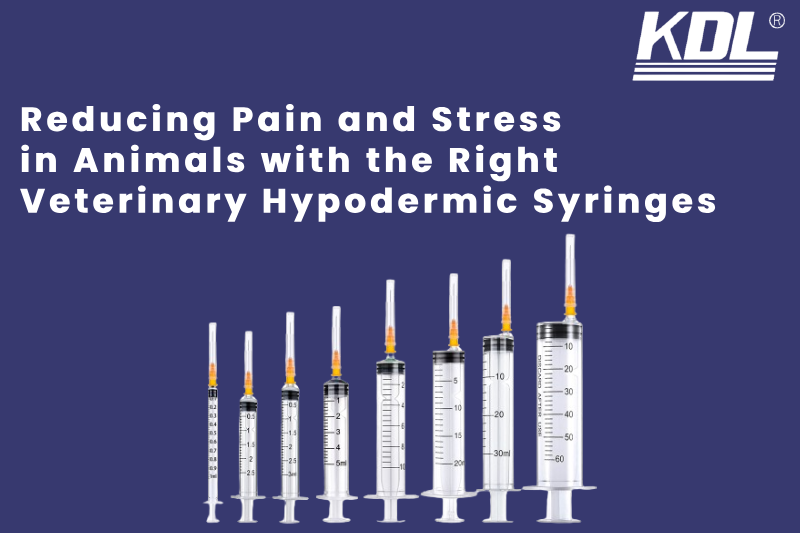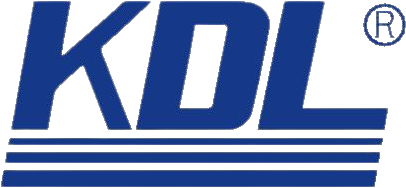
In veterinary care, keeping animals comfortable and healthy is very important. Giving injections is something veterinarians do often, but it can cause pain and stress for animals. Choosing the right veterinary hypodermic syringes can make a big difference in how animals feel during these procedures. In this blog post, we’ll talk about how the right syringe can reduce pain and stress, and we’ll compare different products to help you make the best choice for your pets or veterinary practice.
The Role of Veterinary Hypodermic Syringes in Reducing Pain and Stress
Just like people, animals feel pain and stress when they get shots. The sensation of a needle going into the skin can be uncomfortable and scary for them. Several things can affect how much pain and stress an animal feels during an injection, such as the thickness of the needle, its length, and how the syringe is designed. By understanding these factors and picking the right tools, veterinarians and pet owners can make injections less painful and less stressful for animals.
Comparing Different Veterinary Hypodermic Syringes
1. Needle Gauge Options
The gauge of a needle is how thick or thin it is. This is important because a thinner needle usually hurts less. For example, a 27-gauge needle is very thin and might be best for small animals or injections that need to be very precise, like giving insulin to a cat. A thicker needle, like a 22-gauge, might be better for larger animals or injections that go into the muscle.
Pros of Thinner Needles (Higher Gauge):
- Less pain when the needle goes in.
- Good for small or delicate animals.
Cons:
- Can bend more easily.
- Not great for thick fluids or big animals.
Pros of Thicker Needles (Lower Gauge):
- Better for large animals.
- Can handle thicker medications.
Cons:
- Might cause more discomfort.
- Not ideal for sensitive areas.
2. Needle Length and Its Impact
The length of the needle also matters. Shorter needles are often used for injections just under the skin, while longer needles are needed for shots that go into the muscle. Choosing the right needle length ensures that the medicine goes where it’s supposed to, without causing extra pain.
Pros of Shorter Needles:
- Less invasive and less painful for shallow injections.
- Great for small or thin animals.
Cons:
- Not good for injections that need to go deeper.
Pros of Longer Needles:
- Necessary for deeper injections, like in the muscle.
- Better for larger animals with more muscle.
Cons:
- More invasive and might hurt more if not used carefully.
- Risk of hitting bones or nerves if not handled properly.
3. Syringe Design and Ergonomics
The design of the syringe itself can also affect how comfortable the injection is. Some syringes are made to be easy to use, with smooth plungers, clear barrels to see the dose, and secure needle attachments. These features can make the injection process less stressful for both the animal and the person giving the shot.
Pros of Ergonomic Syringes:
- Easier to handle, making injections more accurate.
- Reduces hand strain for the person giving the injection.
- Smooth plunger action means the needle is less likely to move suddenly, which can reduce pain.
Cons:
- Might be more expensive than regular syringes.
- May not be available everywhere or for all uses.
Innovations in Veterinary Hypodermic Syringes
Advancements in Needle Technology
New needle technologies are making injections less painful and more comfortable for animals. Ultra-sharp needles made from better materials can pierce the skin more easily, causing less pain. Some needles also have special coatings that help them slide into the skin more smoothly.
Smart Syringes
Smart syringes are a new idea that could make injections even better. These syringes might have features like digital tracking of doses, automatic needle retraction, and sensors that help control the pressure of the injection. Though still in development, these smart syringes could change how injections are given in the future.
Eco-friendly Options
With more people caring about the environment, some companies are making eco-friendly syringes that can be recycled or are biodegradable. These syringes not only help the planet but can also reduce stress for animals. For example, some eco-friendly syringes are made for single use, which ensures they are always clean and safe to use.
Services and Support for Selecting the Right Syringe
Veterinary Supplier Recommendations
When choosing the right veterinary hypodermic syringes, it’s important to think about the services offered by different suppliers. KDL is top manufacturer of veterinary medical device that are design with diffrent needle gauge so you choose custom needle options, so you can get the exact gauge and length you need. Others offer bulk ordering, which can save money for bigger practices. Many suppliers also provide helpful resources and support to guide your decisions.
Training and Support
Proper training is key for anyone giving injections, whether it’s a veterinarian, a technician, or a pet owner. Some brands and suppliers offer training programs to make sure injections are done right and with minimal stress to the animal. This training can include tips on picking the right syringe, handling it correctly, and keeping the animal calm during the injection.
Tips for Minimizing Pain and Stress During Injections
Besides choosing the right syringe, there are other ways to make injections less painful and stressful for animals:
- Creating a Calming Environment: Reducing noise and making the area comfortable can help animals feel more relaxed.
- Gentle Handling: Handling the animal gently and confidently can prevent them from getting anxious or scared.
- Distraction Techniques: Using treats, toys, or soothing words can distract the animal during the injection, making them less aware of what’s happening.
- Proper Restraint: Making sure the animal is held securely but not too tightly can prevent sudden movements that could cause pain.
Conclusion
Choosing the right veterinary medical device is key to reducing pain and stress for animals. By considering factors like needle gauge, length, and syringe design, veterinarians and pet owners can make injections as comfortable as possible. Staying informed about the latest products and best practices can also improve the care we provide to animals. By making careful choices and using a gentle approach, we can make injections less uncomfortable and help animals feel better during these necessary procedures.
 +86-791-8686-1216
+86-791-8686-1216 

